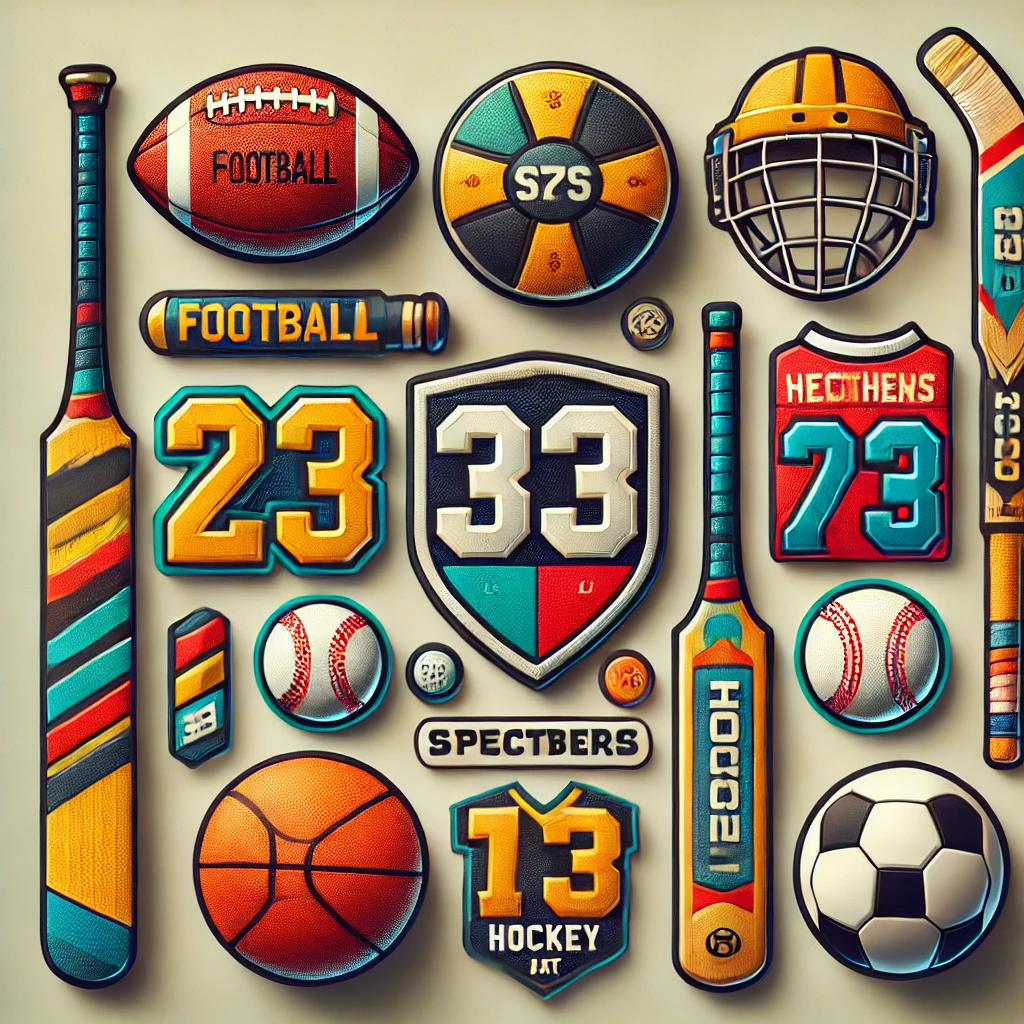The creation of an embroidery friendly design is the first step towards a satisfactory patch project. Creating something digital that has to be later transformed in to something that is physical needs foresight and experience. We understand that artwork design is one of the most crucial aspects to consider, as it can make or break your embroidered patch project. It is the most important factor to consider before your order your custom embroidered patches. So lets make it easy for you guys. Let’s go through the most important aspects to consider when designing embroidered patches.
Size
First and foremost is the size of the patch. Size can be a limitation because it is directly related to the practical use of the patches. Patches for hats get too large if they are more than 2.5 inches in height or more than 4” in width. Same is the case for uniform shoulder patches that can look very large above 4.25” in height and left chest logos look large when above 3.5” in height. Jacket back patches commonly used by motorcycle clubs are 13” in height, which is large enough to avoid any design limitations.
Design issues usually arise when an existing design that was actually created to be used digitally or for printing is now required to be transformed in to embroidered patches. This is usually the case for most of our clients, as most of the designs are meant to be used to digitally or for ink based printing, like company logos. In this situation either the size needs to be adjusted or the design has to be simplified to make it compatible with the factors discussed below.
Stitch Width or Design Width
It is the stitch that depicts the design on an embroidered patch. This is the most crucial limitation of an embroidered patch, it’s a design aspect that can make or break the quality and overall aesthetic of your patches. Always keep each color on the design to a minimum of 1mm in length or width, preferably 2mm, because the minimum stitch length of an embroidery machine is 1mm because the width of the needle (thickest part) is also 1mm, anything less than 1mm will tear the base twill. Think of it like using a felt tip pen that is 1mm thick. Let’s say there’s a letter A on the design. All the lines of the letter A should be 1mm thick for the best results. If this is not done right the letter A can become crooked.
Embroidery Coverage
You need to consider which elements of the design will be covered by embroidery and which elements will not be stitched so that the polyester twill on the base is visible. When used creatively, this can give a bit of 3D effect to the patch. You can also cover the patch with 100% embroidery if that’s what you want. You can learn more about embroidery coverage in this detailed article.
Borders
It is necessary to seal the edges of an embroidered patch for a clean look. There are two types of borders, embroidered (normal stitching) and merrow (over lock stitching). The choice of borders is usually dependent on the shape of your patch.
Merrow border can be used for basic shapes only like circle, square, oval, triangle and shapes that are very basic without any sharp bends and curves. If your patch is not a regular shape and is actually cut to shape with a lot of sharp bends and curves then an embroidered border should be your choice.
You can use only one color if you want a merrow border on your patches. If you are looking for multiple colors on the border then a normal embroidered border is the only way to go.
Colors
If you are designing your artwork for an embroidered patch it’s better to keep the colors to a limit of 12 per design. However, there is no limitation to the number of colors that can be used to embroider your patches. If your design has more than 12 colors there will be slight addition to costs for each additional color.
Costs
It is always a good idea to have a budget when designing artwork for your embroidered patches. Thread colors, patch size, borders and embroidery coverage can impact your costs. Hence, a great design should not just be aesthetically pleasing but should also be budget friendly and practical.
If you are unsure if your design is compatible for an embroidered patch, just fill in the quote form with all details and attach your design to the form. Our sales representative with get back to you with a price quote and let you know if there are any changes that are required for your design before production. At UltraPatches we carefully consider all the factors above to come up with a solution for your embroidered patch project.


